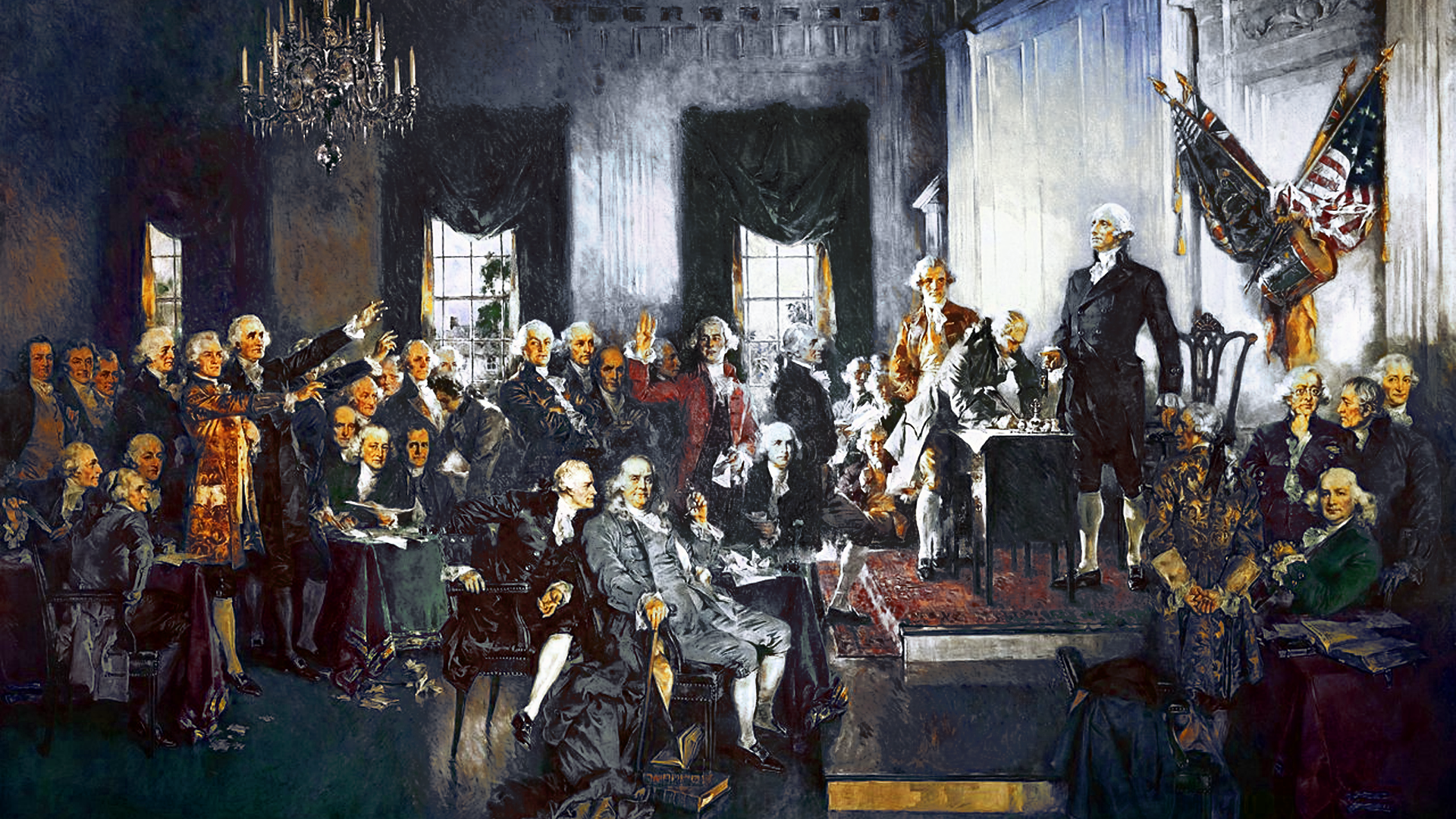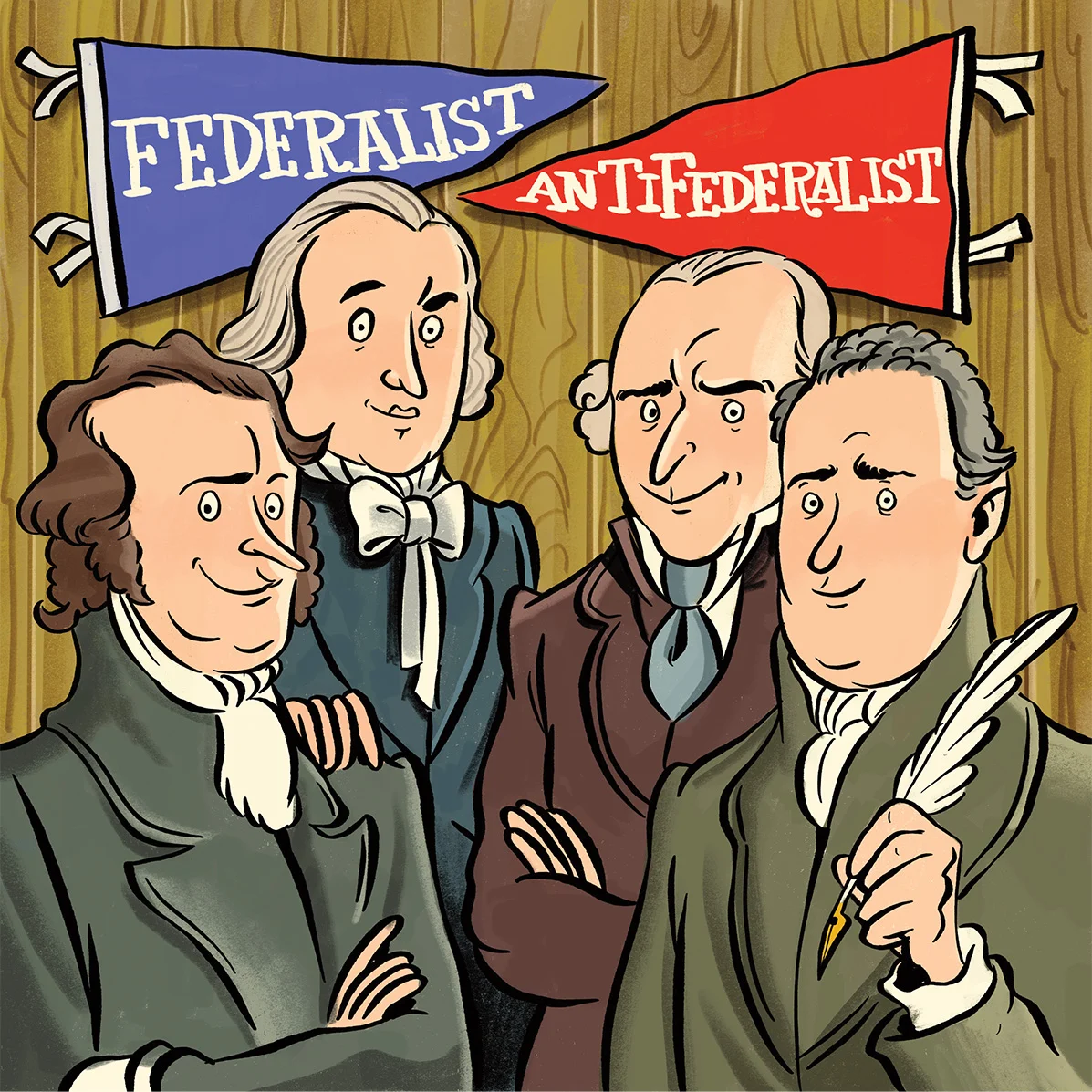Federalists vs. Anti-Federalists: The Battle That Built the Constitution

A heated debate between Federalists and Anti-Federalists shaped the U.S. Constitution.
The Dive
In 1787, the U.S. was still figuring out how to be a country. The Articles of Confederation had kept most power in the hands of the states, but many leaders saw this system as too weak to hold the nation together. Enter the Federalists.
Federalists like Alexander Hamilton, James Madison, and John Jay believed the country needed a stronger national government to survive and thrive. They supported the new Constitution, which created a central authority with the power to tax, regulate trade, raise armies, and enforce laws.
They argued their case in a collection of 85 essays known as 'The Federalist Papers'. These essays laid out a vision of a balanced government with checks and balances, designed to prevent any one branch from becoming too powerful.
On the other side stood the Anti-Federalists: a diverse coalition of farmers, small-state advocates, and political thinkers like Patrick Henry and George Mason. They worried that the Constitution gave too much power to elites in a distant capital, threatening states’ rights and individual liberty.
Their biggest complaint? The Constitution didn’t include a Bill of Rights. Anti-Federalists feared that without guaranteed freedoms—like free speech, freedom of religion, and protections from government overreach—tyranny would follow.
Fierce battles broke out at state ratifying conventions, where Anti-Federalists pushed for amendments and warned that the president could become a king in disguise. In some places, like Rhode Island and North Carolina, ratification was delayed for years.
Eventually, the two sides struck a deal: the Constitution would go into effect, but the first Congress would propose a set of amendments to protect individual rights. In 1791, the Bill of Rights, ten amendments enshrining key freedoms, was added to the Constitution.
The fight between Federalists and Anti-Federalists didn’t just shape the Constitution—it shaped U.S. politics. Federalists favored national power and economic growth. Anti-Federalists (soon known as Democratic-Republicans) pushed back against centralized control.
Their debate over the size and scope of government still echoes today. Who should make the rules? How do we protect liberty while maintaining unity? These questions didn’t end with the Constitution—they began with it.
Why It Matters
This wasn’t just a debate about laws, it was a fight for the future of American democracy. The struggle between Federalists and Anti-Federalists gave us the balance of power, the protection of individual rights, and the blueprint for our political disagreements today. Without their argument, there would be no Constitution, and no Bill of Rights.
?
Why did the Federalists believe a stronger national government was necessary?
What were the Anti-Federalists most afraid of, and how did those fears influence the Constitution?
How did the Bill of Rights act as a compromise between the two sides?
In what ways do modern political debates reflect the Federalist vs. Anti-Federalist divide?
Should more power rest with the federal government or the states? Why?
Dig Deeper
This quick video breaks down the arguments between the Federalists and Anti-Federalists during the ratification of the Constitution.
Crash Course explains the concept of federalism and how it continues to influence American government today.
Related

Building a New Nation: Foundations of State and National Government
From the shaky Articles of Confederation to the Constitution and Bill of Rights, discover how America’s founders navigated the turbulent waters of self-government—and why North Carolina took its time joining the party.

From Articles to the Constitution
The Articles of Confederation got us through a revolution—but not much more. Weak laws, no executive, and constant in-fighting forced the Founders back to the drawing board. What came next? The Constitution.

The Constitutional Convention: Building a More Perfect Mess
In the summer of 1787, 55 men locked themselves in a room to fix the government—and ended up rewriting it from scratch. What came out wasn’t perfect, but it changed everything.
Further Reading
Stay curious!
